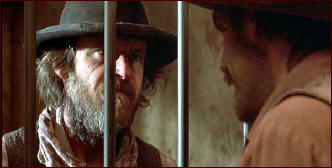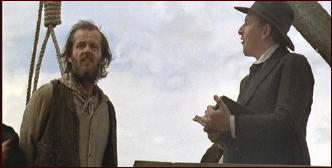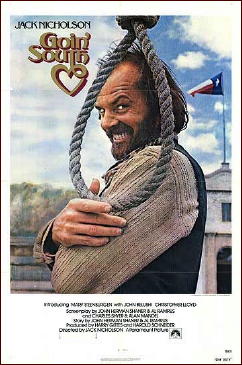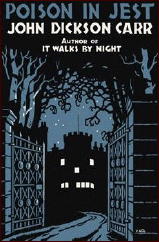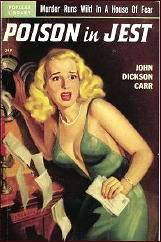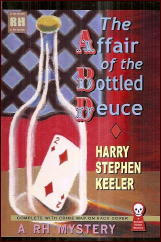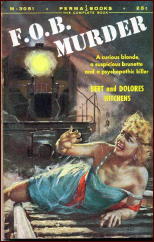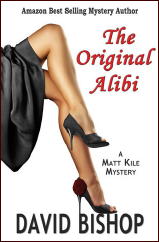Reviewed by DAVID VINEYARD:
MILES BURTON (Charles John Cecil Street, MC, OBE, 1884-1965) — The Secret of High Eldersham. Mystery League, US, hardcover, 1931. First published in the UK by Collins, hardcover, 1930.
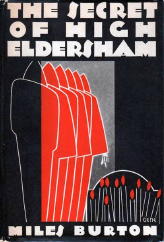
I can testify that the portrayal of East Anglia in this novel is fairly accurate, at least it still was in the 1970’s. It’s a somewhat insular part of England, friendly enough on the outside, but slow to accept strangers, and like many small communities prone to suspicion of anyone and anything new. You can spend thirty years of your life their and still be a foreigner, even if they like you. Simply living there does not make you one of them.
There are certainly towns like that here as well, but it is pronounced in East Anglia — and in High Eldersham, a village of some three hundred people the insularity is particularly pronounced. A few families have intermarried until everyone is related to everyone else, and there is nothing but distrust for strangers. In High Eldersham newcomers tend to have ill fortune, they seldom stay long.
But Mr. Thorold had a long experience of strangers as tenants in East Anglia. However hardworking and conscientious they might be, however keen to promote trade, the receipts of their houses had a way of falling off until they were perforce compelled to relinquish their tenancy. And this curious distrust of strangers, common throughout East Anglia, was particularly active in remote villages like High Eldersham. Yet Dunsford had said that no local man would take the Rose and Crown, and he knew every soul in the village and for miles around.
Burton is good here showing the impact of the First World War on small English villages, both socially and economically. Still, murder is carrying it a bit far so far as local Constable Viney is concerned when he finds the publican of the Rose and Crown, Edward Whitehead, Mr. Thorold’s chosen outsider tenant, a retired sergeant of the Metropolitan Police force, stabbed to death in his chair.
The Chief Constable is by no means sure of local Superintendent Bateman’s ability to handle a murder of this sort, so against the other man’s wishes he asks for help from New Scotland Yard (the detective branch of the London Metropolitan Police, not a national police as sometimes implied in detective stories — still well through the sixties small police forces did sometimes call on the Yard for help — as is done here, and Yard investigations may lead almost anywhere in England, or the world).
Help arrives in the person of Inspector Young (whether as Burton, Waye or Rhode, his policemen tend to be efficient and capable), who enlists Constable Viney as a local expert, and handles himself quite well, but as his first few leads fail to pan out Young decides to call on a wartime friend for help.
During the war (WWI) Young frequently had dealings with the Naval Intelligence branch of the Admiralty, and in the person of a bright fellow he quite admires, Desmond Merrion (Merrion usually works with the competent Inspector Arnold, who debuts in a later adventure).
Merrion is strictly an amateur, not even classifying himself as a detective, but he’s an attractive sleuth along with his man, the capable Newbolt, and I always found him easier to take than the more stately Priestly (not to say anything against the best Priestly’s — I particularly enjoyed The Murders in Praed Street and The House on Tollard Ridge). This was the first outing for Merrion, and the best.
Charles John Cecil Street was Miles Burton, Cecil Waye (author of husband and wife private investigators Christopher and Vivienne Perin in four titles between 1931 and 1933), and John Rhode, one of the staples of the Detection Club, and creator of another great detective, the scientific sleuth Dr. Priestly.
Street was a proponent of the fair play mystery, and a spinner of solid puzzles that on occasion even developed a bit of suspense and action. Julian Symons qualifies him as being of the humdrum school. [FOOTNOTE] (Barzun and Taylor disagree in A Catalogue of Crime and review several books enthusiastically, including this one — I tend to lean toward their view), there is nothing humdrum about The Secret of High Eldersham, however.
In later years (he was still penning Priestly and Merrion novels into the early 1960‘s) Street could be frightfully humdrum to the point of boredom, and unlike Marsh, Christie, Carr, Innes, or Allingham, who all lived and kept writing longer than him, he didn’t manage to modernize much past WWII or hold on to more than a few diehard fans. He is likely best known today for his collaboration with John Dickson Carr (writing as Carter Dickson) Fatal Descent (1939 UK title Drop to His Death), written as Rhode.
Humdrum or not Street was never a bad writer, and some of the early books are highly collectable, but as I said the later books don’t offer much, and frankly for me, they read as if he was just churning it out without the inspiration or the enjoyment of his earlier work. Failing health may also have contributed to the decline. The kindest word I can think of for them is tired, but then having been prolific since the twenties (I count seventy-one Priestly novels and sixty-three Burtons between 1925 and 1961), he was entitled to tired at that point.
In addition to his prolific mystery fiction he wrote non-fiction, often dealing with international politics, and short stories, theater (unproduced), and radio plays (featuring Priestly and Inspector Jimmy Waghorn from the Priestly series). He wrote at least one memoir of his service as a gunnery officer in the First War, and one of his service in Ireland as an Intelligence officer.
That doesn’t matter here, because The Secret of High Eldersham is one of the highlights of his long career, and for my money the best of the Merrion novels. This one has a bit of everything all perfectly balanced between detection, action, and deeper mysteries than mere murder. Something old and evil is brewing in High Eldersham, and anyone who stands against it meets a terrible fate.
When Constable Viney is struck down by a mysterious illness Merrion begins to suspect a broad conspiracy at work (many of Burton’s books feature large criminal enterprises — something a bit different than the more personal murders of many of his contemporaries — not to suggest the others didn’t deal with their fair share of criminal conspiracy and even international intrigue).
It looks to me as though the High Eldersham people suspected, if they don’t actually know, that somebody about the place murdered Whitehead. If they thought it was a stranger, they’d be only too ready with information. As it is, they are convinced that the man met his death in consequence of the spell cast upon him, and the example of his fate is quite enough to induce them to hold their tongues.
There is even an unobtrusive romance for Merrion that figures neatly into the plot causing him some real consternation and anxiety and introducing Merrion to his wife to be, Mavis Owerton, daughter of local landowner Sir William, one of the suspects to Merrion’s chagrin. Burton handles the romance quite well.
Side by side they walked down through the park. The fog had descended thicker than ever, and without Mavis’s guidance Merrion would inevitably have taken the wrong path. She led him to where the dinghy was tied up, then suddenly, as he was about to step into it, she laid a hand upon his arm. “You’re not going to do anything dangerous are you?†she asked softly.
He swung round and faced her. There was a note of solicitude in her voice which made the blood run madly through his veins. Obeying a sudden impulse he caught her in his arms. She lay there for an instant, then gently disengaged herself.
Breathing one last word, “Mavis!†he stepped into the dinghy and picked up the oars. The girl’s figure faded from his eyes into the surrounding mist.
It’s a grown up romance, and doesn’t get in the way for once. Merrion’s concerns for Mavis are genuine and justified, but never descend to the silly ass behavior of some other classic sleuths in love. The Detection Club rules frowned on romance, but just about all the original members broke the rule in one book or the other. It’s Burton’s turn here.
In his early days as Rhode he was prone to the popular theme of the twenties, drug smuggling, especially cocaine. As Rhode, he even wrote a non series book more or less on thriller lines, The A.S.F. The Story of a Great Conspiracy (1924, US title The White Menace).
The drug theme raised its head in his work once in a while after that as it does here, and a nastier lot of smugglers, secretive islanders, villains, devil worshipers, and at least one murderer more sinister than East Anglia ever saw, have seldom inhabited the pages of a mystery. Deviltry is the least of it, in a very real sense, and quietly evoked by Burton, a community’s soul is at risk.
The stone was undoubtedly the altar behind which officiated the devil, the mysterious president of the coven. A glance at the sides of the stone confirmed this. It was carved with strange figures, the obscure symbols of an almost forgotten rite. A sudden horror seized him, the malign influence of this ill-omened grove.
Action, atmosphere and suspense aren’t usually the virtues you tend to associate with Burton or Rhode, but in the early Priestly novels he managed some well staged suspenseful scenes revealing the murderer, and here, taking advantage of East Anglia’s remote dramatic countryside, and his well drawn portrait of High Eldersham and its environs, he provides atmosphere, action, a chase, even a coven, a close encounter with death for Merrion and his girl, a damn good piece of mystery and detection,and there is also some well done business handling small boats. It’s a very physical as well as intellectual and disturbing investigation for Merrion.
The psychology of the thing seems fairly simple to me. The members of the coven derived a definite advantage from the ceremonies. Any one against whom they had a grudge suffered accordingly. But things were a good deal deeper than that. The real attraction was the drugs mixed in the bowl which was handed round, and the sensations they produced. It’s all pretty horrible, but there isn’t the slightest doubt that the meetings ended in an orgy of promiscuous lust, no doubt excited by some form of aphrodisiac. If you study some of the old records, you’ll find these things described in detail. H——–‘s (my annotation to save a spoiler alert) whole idea, of course, was to turn the village into a more or less criminal society …
Granted that sounds more like Dennis Wheatley than Burton or Rhode, and violates all the Detection Club rules save for Chinese chicanery (frankly that drug he describes pretty much is a ‘drug unknown to science’), but you’d have to be a pretty narrow stickler or curmudgeon to care.
This is not a tour de force, but it is perhaps the best book by one of the early masters of the form, highly entertaining, and certainly not the least dull. It is easily the fastest read by Burton or Street I know of.
But Merrion acquired property in High Eldersham, even before he was married. He bought the island which had been the scene of so many strange ceremonies, and, on the night after the purchase was completed, he and Newport went there, armed with sledge hammers, and broke the altar into little pieces, which they threw into the river.
“Reminds me of that chap in the Old Testament, sir,†remarked Newport, as he mopped his brow after his labours. “What was his name, sir?â€
“Gideon. ‘Throw down the altar of Baal that thy father hath, and cut down the grove that is by it.’ Yes, I think we’ll make a job of it, and have these trees down too. Things haven’t changed much since those days, have they?â€
The perfect end to what I consider an almost perfect book of its kind and a satisfying read both for the detective story lover and those that want a bit more accompanying it. If you read only one book by Burton or Rhode, this is the one I would suggest. I consider it one of the true highlights of the Golden Age, a masterpiece of its kind, by an old master.
[FOOTNOTE] Symons defines the Humdrum School thusly for those of you unfamiliar with the term: “Most of them (the Humdrums) came late to writing fiction, and few had much talent for it. They had some skill in constructing puzzles, nothing more, and ironically they fulfilled much better than S. S. Van Dine his dictum that the detective story properly belonged in the category of riddles or crossword puzzles. Most of the Humdrums were British, and among the best known of them were Major John Street …”. — Julian Symons, Bloody Murder.
